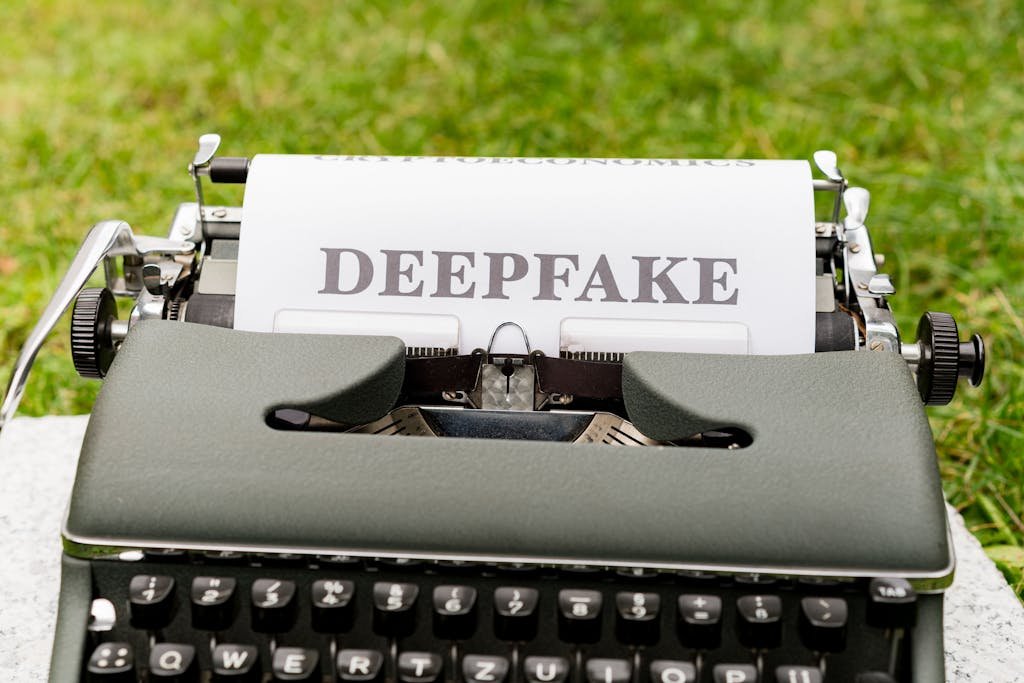Understanding Deepfake Videos: Basics, Advanced Techniques, and Implications
Introduction to Deepfake Videos
Deepfake videos represent a significant technological advancement in the field of digital media. At their core, deepfake videos are synthetic media wherein a person’s likeness is replaced with another’s using artificial intelligence (AI) and machine learning (ML) algorithms. The term “deepfake” is derived from “deep learning,” a subset of machine learning, and “fake,” indicating the fabricated nature of the content.
The evolution of deepfake technology can be traced back to early digital manipulation techniques, but it has seen rapid advancements with the advent of neural networks and enhanced computational power. Initially, deepfake technology was primarily confined to academic research and niche online communities. However, it has now permeated mainstream media due to the availability of sophisticated yet user-friendly software.
The impact of deepfakes on digital media is profound. These videos have revolutionized how content is created and consumed, offering both innovative applications and notable challenges. On the one hand, deepfakes have enabled groundbreaking advancements in entertainment, such as hyper-realistic visual effects in movies and personalized content in marketing. On the other hand, they have raised serious ethical and security concerns, especially regarding misinformation, digital identity theft, and privacy violations.
Understanding the basics of deepfake videos is crucial for anyone navigating today’s digital landscape. This introductory section sets the stage for a more comprehensive exploration of how deepfakes are created, the advanced techniques involved, and their far-reaching implications. As we delve deeper, we will uncover the intricate mechanics behind these videos and discuss the broader societal and legal ramifications they entail.

The Role of Artificial Intelligence and Machine Learning
Deepfake videos represent a fascinating yet concerning manifestation of advancements in artificial intelligence (AI) and machine learning (ML). To understand their creation, it is essential to grasp the underlying technical processes that make these highly realistic fake videos possible. At the core of deepfake technology are sophisticated neural networks that are trained on extensive datasets comprising video and audio content.
One of the primary techniques utilized in generating deepfakes involves Generative Adversarial Networks (GANs). A GAN consists of two neural networks: the generator and the discriminator. The generator creates fake content, while the discriminator evaluates its authenticity. Through iterative training, these networks engage in a dynamic competition, progressively enhancing the quality of the generated outputs. As a result, the generator becomes adept at producing convincingly realistic videos that can be challenging to distinguish from genuine footage.
Another critical component in the development of deepfake videos is the use of autoencoders. Autoencoders are neural networks designed for unsupervised learning, where they compress input data into a latent space representation and then reconstruct it. In the context of deepfakes, an autoencoder is trained to learn the facial features and expressions of individuals from a large dataset. By manipulating the latent space representation, the network can reanimate a person’s face to perform actions or speak words they never actually did.
The process of training these neural networks is computationally intensive, requiring substantial computational resources and large volumes of data. High-performance GPUs are often employed to accelerate the training process. The datasets used include thousands of hours of video footage and audio recordings to ensure the networks can capture a wide array of expressions, movements, and vocal nuances.
The integration of AI and ML is what empowers deepfake technology, pushing the boundaries of what is possible in digital content creation. However, this same technology also raises ethical and security concerns, emphasizing the need for continued research and development of detection mechanisms to mitigate potential misuse.
Video Editing Techniques for Deepfake Creation
Creating deepfake videos involves a sophisticated combination of artificial intelligence (AI), machine learning (ML), and advanced video editing techniques. These components work together to produce content that can appear astonishingly realistic, making it challenging to distinguish between genuine and manipulated footage. The process typically starts with gathering extensive data sets, which include numerous images and videos of the subject whose likeness is to be replicated. This data is then used to train AI models to understand and mimic the subject’s facial expressions, voice, and mannerisms.
Several software tools have emerged as popular choices for deepfake creation. Open-source platforms like DeepFaceLab and Faceswap offer powerful capabilities that allow both professionals and amateurs to generate high-quality deepfakes. These tools enable users to swap faces in videos by aligning and blending facial features meticulously, ensuring that transitions are smooth and lifelike. The FaceApp and Zao applications, although more simplistic, have also gained traction for their user-friendly interfaces and ability to create quick, albeit less sophisticated, deepfakes.
Advanced video editing practices play a crucial role in refining deepfake content. Techniques such as motion tracking, color correction, and layering are employed to enhance the realism of the final product. Motion tracking ensures that the superimposed face aligns perfectly with the subject’s movements, while color correction adjusts the lighting and skin tones to match seamlessly. Layering involves combining multiple video elements to create depth and eliminate any visual discrepancies that may arise during the face-swapping process.
Despite the impressive technological advancements, the ethical concerns surrounding deepfake videos cannot be overlooked. The potential for misuse in spreading misinformation, perpetuating fraud, and violating privacy is significant. As deepfake technology becomes more accessible, it is imperative to consider the moral implications and establish guidelines to prevent harmful applications. Balancing innovation with responsibility is essential to mitigate the risks associated with this powerful tool.
Malicious Uses: Phishing, Extortion, and Compromising Individuals or Businesses
Deepfake technology, while revolutionary, carries significant risks when wielded with malicious intent. One of the most alarming applications is in the realm of phishing. Cybercriminals have begun utilizing deepfake videos to create highly convincing impersonations of trusted figures, such as CEOs or financial officers, to deceive employees into transferring funds or divulging confidential information. The realism of these videos makes it increasingly difficult for targets to discern genuine requests from fraudulent ones, thereby amplifying the effectiveness of phishing attacks.
Extortion represents another perilous use of deepfakes. Malicious actors can fabricate compromising videos of individuals, depicting them in scenarios that never occurred. These fabricated videos are then used to extort money or favors, threatening to release the fake content unless demands are met. The psychological impact on victims can be profound, especially when the deepfake appears highly credible. In one notable case, a deepfake video purportedly showing a political figure in a compromising situation led to a significant public outcry and demands for resignation, despite the video being entirely fabricated.
Businesses are not immune to the threats posed by deepfakes. The potential to damage corporate reputations or manipulate stock prices is substantial. For instance, a deepfake video of a CEO making false statements about a company’s financial health can lead to a rapid decline in stock value and erode investor confidence. In another case, a fraudulent deepfake video was used to impersonate a high-profile executive, resulting in the transfer of substantial sums of money to the perpetrators. Such incidents underscore the urgent need for businesses to develop robust verification processes to safeguard against these sophisticated attacks.
Real-world examples highlight the severe implications of deepfake misuse. The potential for widespread harm underscores the necessity for vigilant monitoring, advanced detection technologies, and stringent legal frameworks to mitigate the risks associated with this powerful technology. By understanding the dangers and staying informed, individuals and organizations can better protect themselves against the malicious uses of deepfake videos.
Deepfake Videos in Social Media and News Outlets
The proliferation of deepfake videos across social media platforms like Twitter and various news outlets has introduced significant challenges in maintaining the integrity of information. These digitally manipulated videos, which can convincingly alter the appearance and speech of individuals, pose a unique threat to the credibility of content shared online. Social media platforms, with their vast user bases and rapid content dissemination capabilities, are particularly vulnerable to the spread of deepfake videos. The algorithms that prioritize engagement often inadvertently amplify sensational or misleading content, making it difficult to distinguish genuine media from manipulated ones.
Identifying deepfake videos is a complex and evolving challenge. Current technologies deployed by platforms like Twitter rely on a combination of automated detection tools and manual review processes. These tools leverage machine learning algorithms trained to recognize inconsistencies and artifacts typical of deepfake videos. However, as deepfake technology advances, these detection mechanisms must continuously adapt to new techniques used by creators of manipulated content. This cat-and-mouse game places a considerable strain on the resources of social media companies, as they must balance swift content removal with the risk of false positives.
News outlets also face significant hurdles in managing the impact of deepfake videos. Credibility is the cornerstone of journalistic integrity, and the dissemination of false information can severely undermine public trust. Traditional media organizations have established fact-checking protocols and rely on expert analysis to verify the authenticity of video content. Nonetheless, the speed at which deepfake videos can be shared and go viral on social media complicates these verification efforts. The potential for deepfakes to influence public opinion, sway elections, or incite social unrest makes their presence in news ecosystems particularly concerning.
The impact of deepfake videos on public trust and information integrity cannot be overstated. As deepfake technology becomes more sophisticated and accessible, the line between reality and fiction blurs, leading to increased skepticism and cynicism among the public. This erosion of trust in digital media necessitates a concerted effort from both technology companies and news organizations to develop more robust detection and verification frameworks. Ensuring the accuracy and reliability of information is paramount in preserving the integrity of both social media and news outlets in the digital age.
Avoiding and Detecting Deepfake Videos
In an era where digital manipulation of media has become increasingly sophisticated, avoiding and detecting deepfake videos is essential for both individuals and organizations. Deepfakes can be highly convincing, making it difficult to discern genuine content from manipulated footage. However, by employing a combination of vigilant practices and advanced tools, one can significantly reduce the risk of falling victim to these deceptive videos.
Firstly, verifying the authenticity of video content is crucial. One effective method is to cross-reference the video with other reliable sources. If a video claims to show a significant event, checking credible news outlets or official sources can confirm its legitimacy. Additionally, scrutinizing the video’s metadata, such as the creation date and author, can provide valuable context. Authentic videos usually have consistent and traceable metadata, while deepfake videos may have irregular or missing information.
Another vital aspect is recognizing the common signs of deepfake manipulation. Though deepfake technology has advanced, certain anomalies often persist. Look for unnatural facial movements, inconsistent lighting and shadows, and lip-syncing issues. Often, deepfakes may exhibit blinking patterns that do not match natural human behavior or have slight distortions around the edges of the face. Being aware of these indicators can help in identifying potential deepfakes.
Furthermore, leveraging available detection tools and services can enhance one’s ability to identify deepfake videos. Numerous software solutions and online platforms offer deepfake detection capabilities. Tools such as Deepware Scanner, Sensity, and Microsoft’s Video Authenticator analyze videos for signs of manipulation using algorithms and machine learning techniques. These tools can be particularly useful for organizations that handle a large volume of video content and require efficient and accurate detection methods.
Incorporating these practices and tools into your routine can significantly mitigate the risk posed by deepfake videos. By staying informed and vigilant, individuals and organizations can better protect themselves against the increasing threat of digital deception.
DeepFaceLab: Capabilities and Examples
DeepFaceLab stands as one of the most advanced and widely-used tools for creating deepfake videos. This software, designed primarily for the synthesis of realistic faces in video content, offers a plethora of features that cater to both novice and professional users. Its capabilities extend from basic face swapping to more sophisticated applications such as face reenactment and facial attribute editing. DeepFaceLab’s user-friendly interface allows for streamlined navigation, making it accessible to users with varying levels of technical expertise.
The core functionality of DeepFaceLab revolves around deep learning techniques that leverage neural networks to analyze and recreate human facial expressions with high accuracy. This is accomplished through a series of steps, including data extraction, model training, and video merging. The software supports multiple models, each optimized for different levels of detail and performance, thereby allowing users to choose the most suitable model based on their specific requirements.
One of the remarkable aspects of DeepFaceLab is its ability to create highly convincing deepfake videos. Examples abound on various platforms, showcasing the software’s potential. From humorous celebrity face swaps to more serious applications in film and media, DeepFaceLab has proven its versatility. Notable deepfake videos created using this software include realistic impersonations of public figures, which have garnered millions of views and sparked widespread discussion.
However, the power of DeepFaceLab also brings ethical considerations to the forefront. The potential for misuse in creating deceptive content is significant, raising concerns about privacy, consent, and misinformation. It is crucial for users to adhere to ethical guidelines and consider the implications of their creations. Responsible use of this technology involves obtaining permission from individuals whose likenesses are being used and being transparent about the nature of the content.
In summary, DeepFaceLab represents a powerful tool in the realm of deepfake video creation, offering extensive capabilities and producing impressive results. While its applications are vast and varied, the ethical considerations surrounding its use cannot be overlooked. As this technology continues to evolve, it remains imperative to balance innovation with responsibility.
Future Implications and Ethical Considerations
As deepfake technology continues to evolve, its potential applications and implications become increasingly significant. On one hand, deepfakes can offer substantial benefits in fields such as entertainment, education, and digital communication. For instance, filmmakers can use deepfakes to create realistic special effects, while educators might employ the technology to produce engaging, interactive learning materials. However, these potential benefits are tempered by considerable risks, particularly in the context of misinformation and privacy violations.
Ethical considerations surrounding deepfake creation and usage are paramount. The ability to fabricate convincing video content raises questions about consent, authenticity, and the potential for misuse. For example, deepfakes can be weaponized to produce misleading videos that may damage reputations, manipulate public opinion, or even incite violence. This underscores the urgent need for ethical guidelines that govern the responsible development and deployment of deepfake technology.
Establishing robust regulatory frameworks is critical to addressing these challenges. Governments and regulatory bodies must collaborate to create comprehensive policies that deter malicious use while promoting beneficial applications. These regulations should include stringent penalties for the creation and distribution of harmful deepfakes, as well as mechanisms for identifying and removing such content swiftly.
The role of technology companies in mitigating the negative impacts of deepfakes cannot be overstated. Companies involved in the development of deepfake technology have a responsibility to implement safeguards that prevent misuse. This includes developing advanced detection tools to identify deepfake content and implementing verification systems to authenticate the source of digital media. Furthermore, tech firms should engage in ongoing dialogue with policymakers, ethicists, and the public to ensure that their innovations align with societal values and norms.
In conclusion, while deepfake technology holds promising potential, its ethical and societal implications necessitate careful consideration. By fostering collaboration among governments, technology companies, and civil society, we can harness the benefits of deepfakes while safeguarding against their risks, ensuring a balanced approach to this transformative technology.
For more articles related to technology, please browse around InnoVirtuoso and find more interesting reads.







